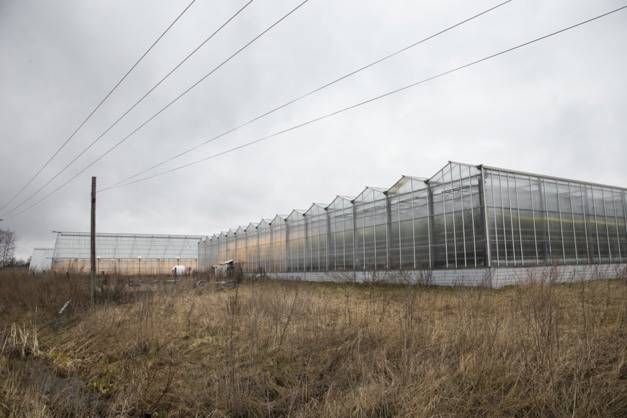This week, the winter has really come in Finland, with Finnish winter temperatures. The market price of electricity, which has already been high, is now getting even higher.
Nuclear power plants and windmills generate most of Finland's power. It was expected that a new nuclear power plant would start producing at full speed in December. "But the new Olkiluoto 3 -nuclear power plants electricity production has been delayed more and more and we must import more electricity into Finland", says Niina Kangas with Kauppapuutarhaliitto, The Finnish Glasshouse Growers’ Association. She notices how growers are struggling and keep their greenhouses full because they cannot bear the electricity costs.

Finland industry
Finland boasts 838 greenhouse companies, half of which cultivate vegetables, herbs, and soft fruit, the other half ornamental plants. More than two-thirds of the approximately 375 hectares are devoted to fruit and vegetables. There are only a handful of large farms. The smallest is 300m2, and the largest is about 12 hectares. The average acreage per farm is less than half a hectare. There is a growing trend toward fewer businesses, proven by the fact that, in 2016, there were still almost 1,200 active greenhouse farmers.
Highly efficient growing
Finnish growers are known for growing in a highly efficient way. Every year, there's research being done on the climate impact of the sector. Recently, the Finnish Natural Resources Agency has calculated the greenhouse industry's climate impact in 2021 has decreased by 60 percent compared to 2004. The significant decrease is explained by the fact that the use of greenhouse oil as heating energy has decreased by 87 percent in the same time period. At the same time, renewable fuels have been used as energy sources. In 2021, the share of renewable energy sources in heating was a total of 56 percent. In addition, the total harvest level of greenhouse vegetables has increased from 60 million kilograms in 2004 to 98 million kilograms in 2021, which significantly reduces the climate impact.

"Greenhouse companies have made production more efficient and at the same time significantly reduced emissions. Greenhouse companies continue to invest in greener forms of energy, which means that the direction will remain the same in the coming years", says Niina. However, it is unclear what the total production will be, as growers are dealing with high energy costs.
Wood chips
The heating of the greenhouses is largely based on renewable energy sources based on wood. The most common heating fuel in greenhouses is wood chips. The share of oil is only eight percent of the total energy consumption. The consumption of heavy fuel oil has almost disappeared. And even though prices have gone up quite a lot for that too, ultimately, the real pain point for Finnish growers is electricity.
"The government has not supported the growers dealing with the rising electricity prices", Niina explains. "In spring we got a support package, but that was because of the growing production costs of 2021."
Production stopped
And thus, the situation is hard at the moment. "In September we estimated that there would be 50% less tomatoes, 10-20% less cucumbers, and 5-10% less lettuce and herb cultivation area that winter 2021-2022. Now it looks even worse, especially for the tomato growers", Niina says.
"Some growers have part of their electricity prise fixed, but even some of those growers have estimated that the risk is too high, and it is better to take a break and continue when the sun starts to offer its energy again."
For more information:
Kauppapuutarhaliitto
Veljestentie 16, 00730 Helsinki
info@kauppapuutarhaliitto.fi
kauppapuutarhaliitto.fi
